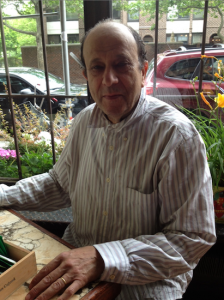
Retail Resurgence in North Heights Gateway
New Traffic To BBP, DUMBO Boosts Rents & New Investment

It’s the also-ran of Brooklyn Heights retail corridors, second best by a long stretch when compared to Montague Street.
Yet lower Henry Street is on the upswing these days – and restaurant owners and merchants can thank visitors to Brooklyn Bridge Park for their improving fortunes.
Surging interest in the glamorous waterfront park is drawing tourists and people from other neighborhoods onto the North Heights dining and shopping street. They come by subway or walk across the Brooklyn Bridge – and wind up picking up picnic provisions or having a nice nosh before or after their BBP visits.
“This is the beginning of increased popularity for Henry Street – and there is more to come,” predicted Timothy King, managing partner of CPEX Real Estate.
“We definitely see it as a gateway to the neighborhood,” Brooklyn Heights Association president Alexandra Bowie said. “We’re excited about the prospect of a vibrant retail strip there.”
Residents with long memories recall the street’s slight seediness of years past, when the Ace Wire Brush building at 30 Henry was a vestige of the North Heights’ days as a light-manufacturing locale. The St. George Hotel cast a pall due to decades of decline and a catastrophic 16-alarm fire in 1995 before it was turned into college dorms.
That didn’t stop enterprising restaurateurs from settling in – and some have shown serious staying power. For Henry’s End and Noodle Pudding, the key to longevity was creating dining destinations for discerning eaters. For Fascati and Fortune House, it was a matter of delivering the basics every self-respecting Brooklyn neighborhood needs: Pizza and Chinese food. Selling booze – another essential – has kept Michael Towne Wines and Spirits going since 1934.
Now Henry Street’s old-timers and newer arrivals alike are seeing a revenue boost from park-goers.
From the A and C High Street/Brooklyn Bridge station, it’s a straight shot to the corner of Henry and Cranberry Streets, where the plate-glass windows of the Brooklyn Heights Wine Bar catch tourists’ attention.
“They have espresso then go to the park, or have vino on the way back,” said Mark Lahm, who opened the watering hole at 50 Henry in 2009 with another Henry Street businessman, Jim Montemarano, and also owns foodie fave Henry’s End.
Because of the tourists, business at the wine bar has increased 20% in the past year, he said. Some of them are coming back for repeat visits or sending their friends.
Even with increased foot traffic – and dollars – from BBP visitors, lower Henry Street with its relatively limited number of storefronts won’t catch up to the Heights’ Numero Uno retail corridor, though.
“It’s never going to turn into Montague Street,” Lahm said. “They’ve got office workers and court workers.” Also, the reopening of the Bossert Hotel as luxury lodging is expected to boost Montague merchants’ revenues and rents, as the Brooklyn Daily Eagle has reported.
Henry Street retail spaces are currently worth $60 to $75 per square foot for big spaces – or 60% to 75% of Montague Street storefronts’ value, said Bill Ross, director of development marketing at Brown Harris Stevens/Halstead.
No one has signed leases recently, so the rents people are paying are lower, he said.
In spaces of around 2,000 square feet or more, tenants are paying $45 to $55 per square foot, said real estate broker King. For small spaces of 600 square feet rates are around $75 per square foot.
With increasing prosperity on Henry St., Siggy Sollitto fears there will be a rent hike when her lease at 76 Henry expires in two years. The DUMBO resident pays $80 per square foot for the 600-square-foot storefront that has housed organic food restaurant Siggy’s for eight years.
She originally planned to open it in Carroll Gardens but an ad for the Henry Street site, where a deli was located, changed her mind. Before she took possession of the space the chef, who then lived in Red Hook, scoped out Henry Street at night. It was way too quiet for her liking.
“I was depressed. I thought, ‘What did I do?’ But I built the place and people came,” said Sollitto, who has appeared on the Food Network contest show “Chopped.”
Park visitors have increased Siggy’s revenues 5% in the past year. Other tourists come to her restaurant because it’s listed in guidebooks published in France, Spain and Great Britain. Warm-weather sidewalk seating nearly doubles the number of sit-down customers Siggy’s can handle.
She and other Henry Street tenants shouldn’t worry too much, real estate brokers say. There are limits to how high the rents can climb.
“The one problem you’ll always have in Brooklyn Heights is it’s landmarked. You’re not getting a 500-unit residential tower,” said Ross, the real estate executive. “The ‘indigenous population’ is going to be limited.”
Sudden population growth has dramatically driven up retail real estate values in places like Williamsburg. After rezoning for large-scale residential development there, Bedford Avenue retail rents more than tripled from $60 per square foot to $200 per square foot in eight years, he said.
What could deliver a jolt to Henry Street retail rents would be the sale and residential makeover of big Jehovah’s Witnesses properties nearby, such as the Towers Building at 21 Clark St., he said.
Even if that were to happen, the owner of highly regarded Henry’s End won’t have to deal with a rent hike for a long time.
Last year, local investor Kenneth Landon bought the building it’s in for $1.92 million from a revocable trust set up for the restaurant’s original owner, Donald Beckerman. But Lahm currently has nine years left on his lease at a reasonable rate, he said.
Beckerman was considered a pioneer when he opened Henry’s End in 1973. The eatery at 44 Henry became a North Heights oasis where residents ordered up omelets and burgers and listened to a Wurlitzer jukebox.
By 1980, when Lahm landed a job there as a dishwasher to pay his way through Brooklyn College, Beckerman had sold it to another restaurateur, Gary Pomponio, but kept ownership of the building.
Lahm worked his way up to manager and became friends with Pomponio, who taught him how to cook. He went to the Culinary Institute of America for a formal education and bought Henry’s End in 1986, after he graduated.
The North Heights resident made the 50-seat restaurant into a fine-dining stronghold that serves up wild game in fall and winter; herb-encrusted elk chops are a signature dish. A Zagat review once said, “This is why they built the Brooklyn Bridge.”
After three decades it’s still fun to go to work at Henry’s End because of positive feedback from customers, he explained.
“They say, ‘We had our first date at that table 20 years ago.’ They bring in their kids, who now are having babies of their own,” he said. “People celebrate their anniversaries here every year or their birthdays.”
There’s currently just one empty storefront on the street: 96 Henry, in the St. George Hotel, which All Security Locksmith vacated on May 1.
The fate of one important corner location is in limbo: 70 Henry, the Heights Cinema building, where last year landlord Tom Caruana wanted to construct a five-story apartment building with space for the movie theater in the basement. The plan would require Landmarks Preservation Commission approval.
“It’s all status quo right now,” said Caruana, whose grandfather Giuseppe Zevola bought the property in 1968 through a family corporation, Ridgeton Poultry, which operated a poultry company outside New York City. “In two months there might be something different to say.”
Things are looking up at a second key corner location, 60 Henry, which has had so many troubles it was said to suffer from the “corner of Cranberry curse.” The space sat vacant for years after Su Su’s Yum Yum – where Mayor Koch regularly ate – closed down because of problems like kitchen vents that spewed exhaust onto Cranberry Street. After that, a series of restaurants came and went – including one where the owner was arrested on charges of credit card fraud.
A simpatico Italian restaurant, Bevacco, will mark its two-year anniversary at 60 Henry this fall. When asked if the curse has been lifted, general manager Enrico Moro laughed.
“It is still cursed,” he said. “But we are from the Old World. We know how to deal with ghosts.”
At a third corner building, 72 Henry, a new northern Italian restaurant called Sociale is opening to the public on June 24.
Rent won’t be an issue: Sociale’s owner Michael Keefe, a property investor from New Jersey, bought the building in 2011 for $1.45 million. Francesco Nuccitelli, who ran East Village restaurant Perbacco, will be the general manager. As chef they hired Rosendo Lozano, who worked for the executive chef at Meatpacking District restaurant Scarpetta.
Nuccitelli has no intention of going after foodie favorite Noodle Pudding’s customers.
“To compete with them would be a battle lost from the beginning,” he said.
“Noodle Pudding is like an award-winning lawyer who went to Harvard Law School. We are a little baby just born. We need to go to nursery school first.”
Pooja Raj picked the Henry Street area over Montague Street to open coffeehouse Vineapple – and after two years in business she sees her choice turned out well.
The Park Slope resident, who lived in the North Heights while attending NYU grad school, rented a space at 71 Pineapple St. that had been empty for 11 years. In prior years it had been by turns a bar called 71, a Mexican restaurant, El Palenque, and a bar named Whatever.
Before Vineapple opened, some neighbors opposed her plan to serve alcohol in the back garden. She hasn’t used the garden for any food or drink service and plans to keep it that way for now.
Soon after the coffee shop opened she tested – and quickly dropped – a policy of requiring customers to buy a beverage for every hour of WiFi use. A local blog heated up with comments pro and con.
“We tried it for one day to see how well it would go – and it didn’t go so well,” she said.
After the first six months, full of ups and downs, business settled into a rhythm, she said. More recently, visitors to Brooklyn Bridge Park have brought a noticeable uptick in revenues.
“We’re so excited and happy at how things are going,” she said. “We know our customers by name. We know the kids. We know their parents. It has turned into a big family.”
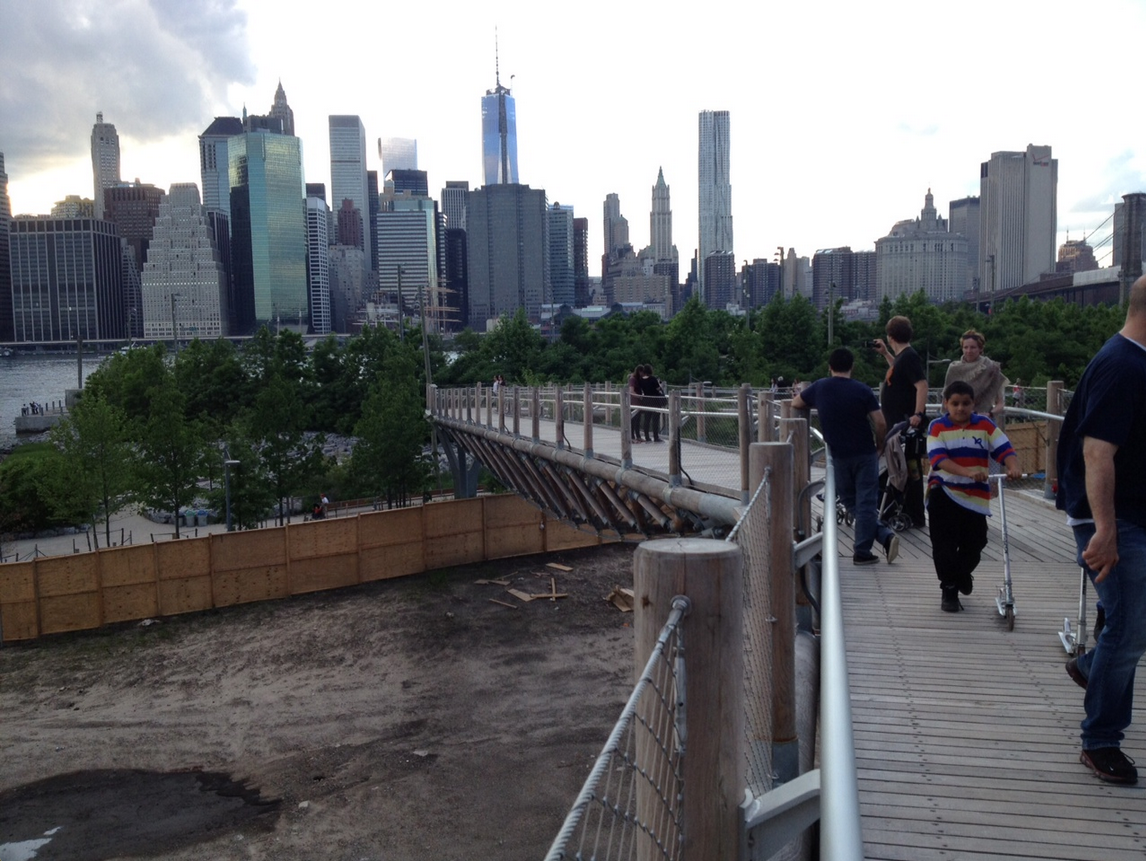
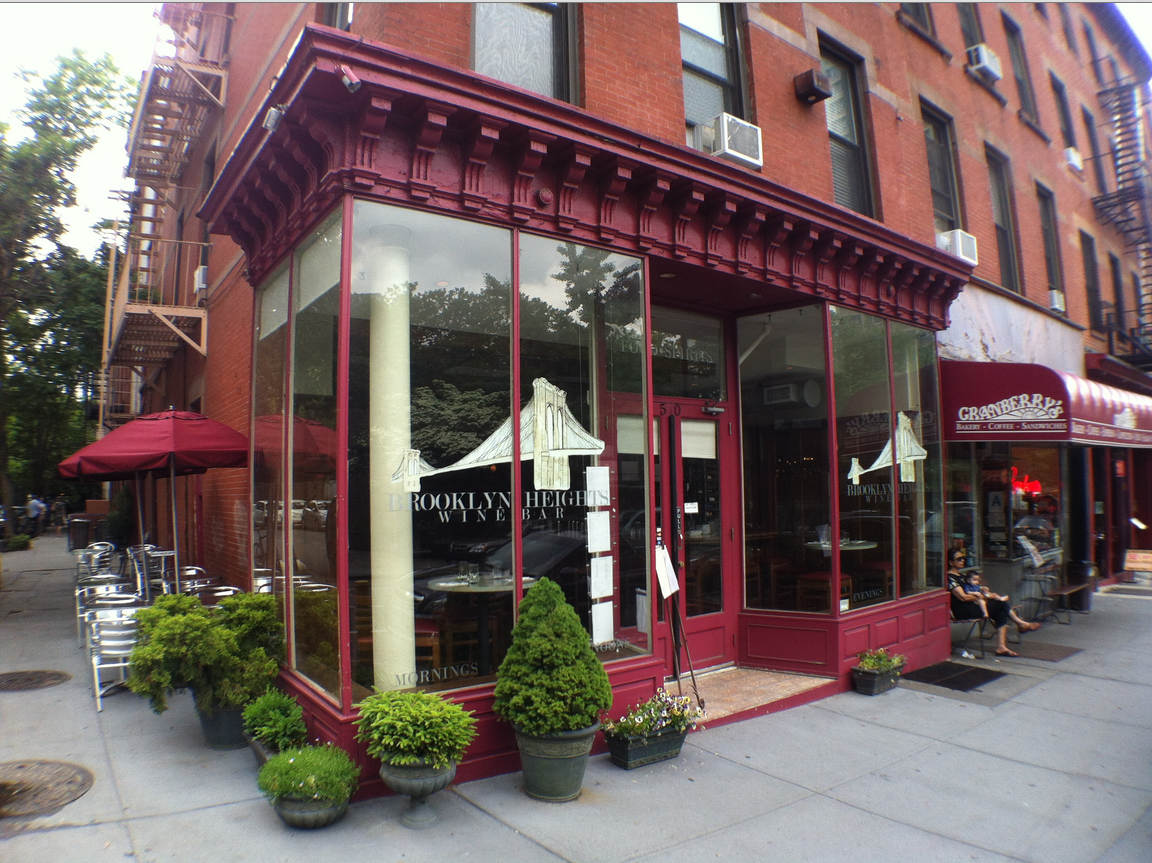

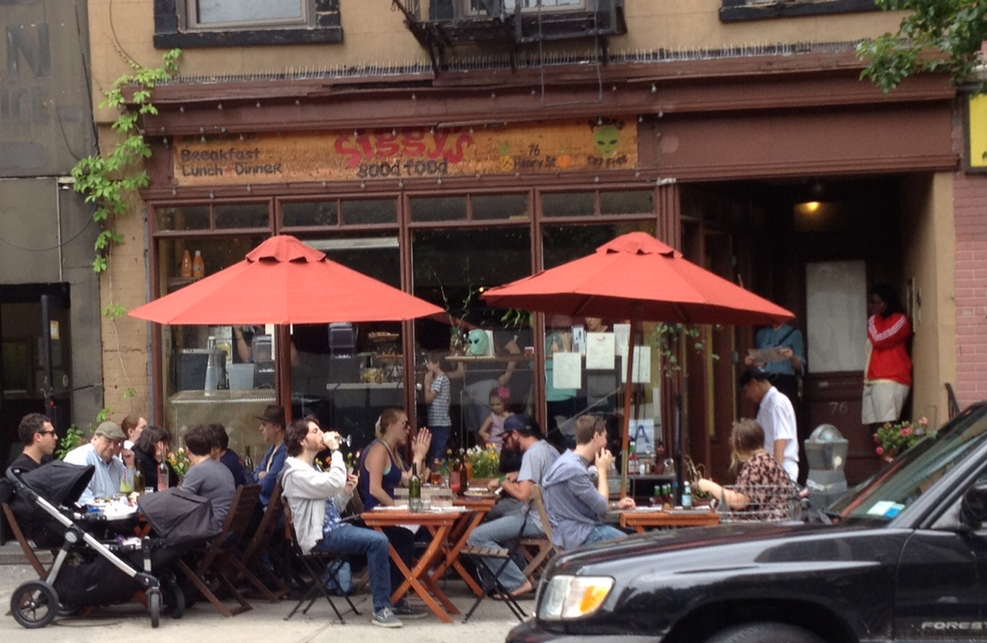



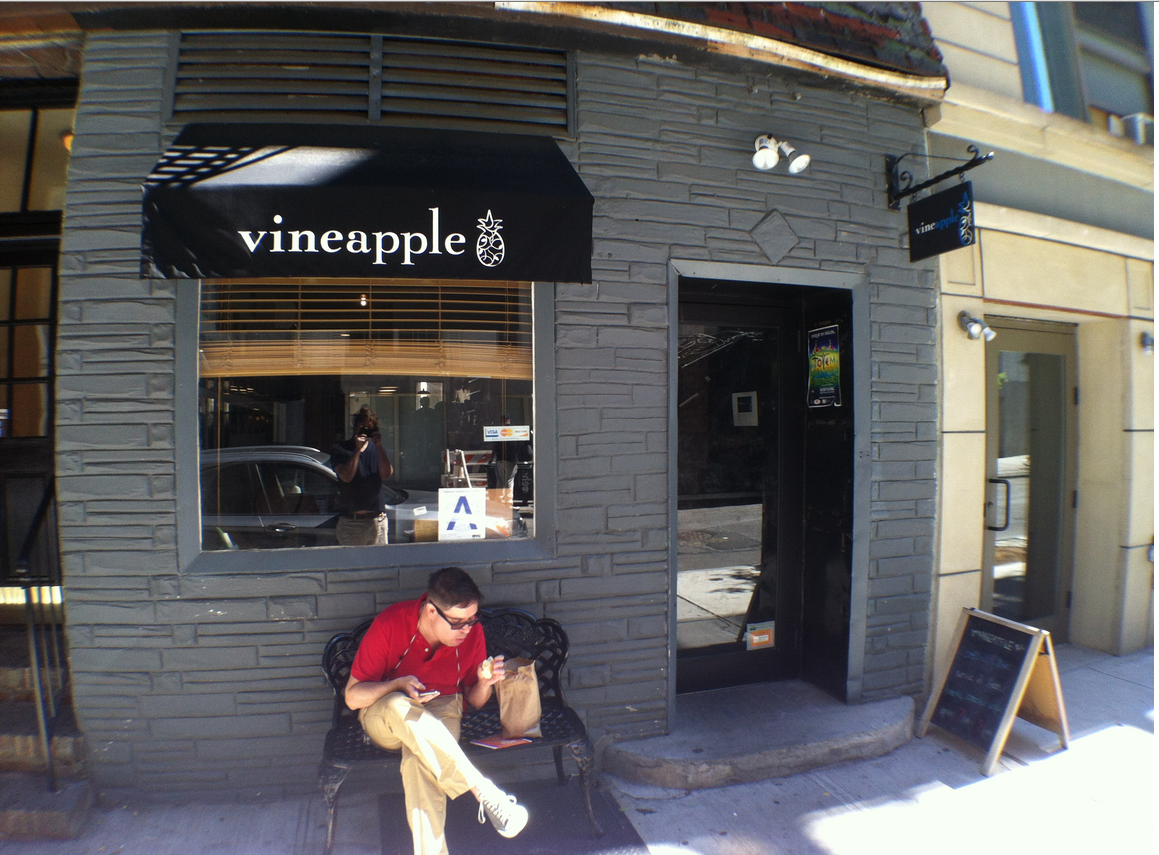
Leave a Comment
Leave a Comment


